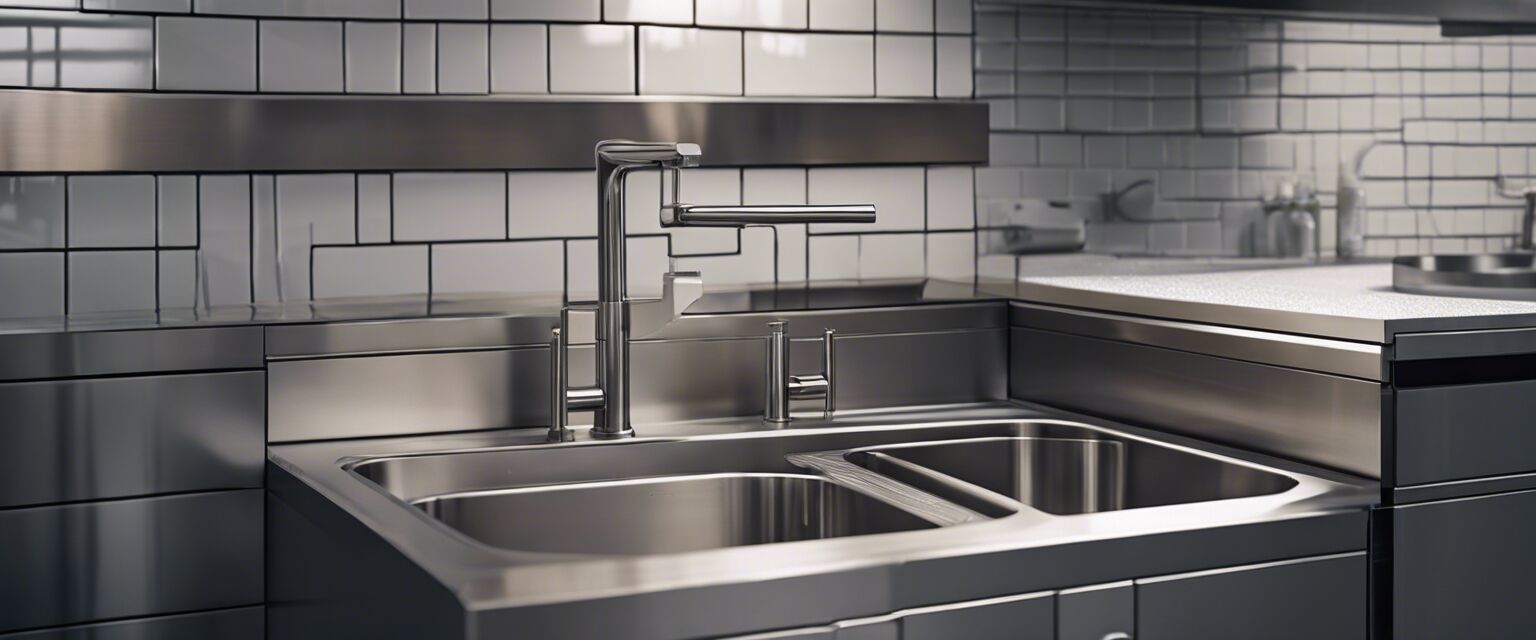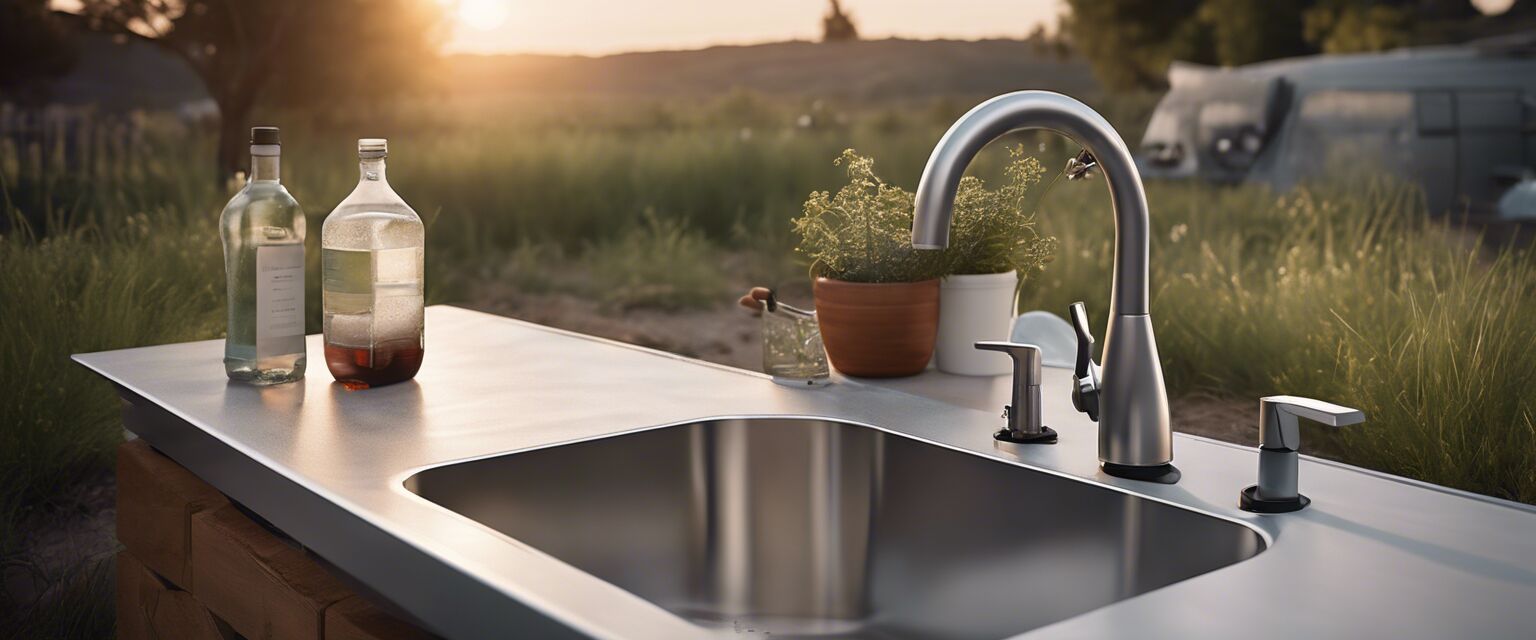
ADA Compliant Sinks: A Comprehensive Guide for Commercial Kitchens
Key Takeaways
- ADA compliant sinks are essential for accessibility in commercial kitchens.
- Various types such as handwashing, prep, and utility sinks are available to meet compliance standards.
- Considerations include height, depth, and clearance space around the sink.
- Regular maintenance and inspection ensure continued compliance and functionality.
When designing a commercial kitchen, adhering to the Americans with Disabilities Act (ADA) compliance is crucial for ensuring accessibility for all employees. This guide covers the essential factors to consider when choosing and installing ADA compliant sinks in your establishment, whether itâs a restaurant, school, or any other institutional kitchen.
Understanding ADA Compliance
ADA compliance refers to the standards put forth by the Americans with Disabilities Act, which aims to ensure equal access and opportunity for individuals with disabilities. As part of this initiative, specific guidelines dictate how sinks should be designed and installed to accommodate various users in commercial kitchens.
Key Guidelines for ADA Compliant Sinks
| Feature | Compliance Requirement |
|---|---|
| Height | Max height of 34 inches from the floor |
| Clearance | Must allow for a minimum of 27 inches from the floor |
| Depth | Should be a minimum depth of 6 inches |
| Faucet Controls | Should be easy to operate with one hand |
Types of ADA Compliant Sinks
Different types of sinks are required in a commercial kitchen, and understanding these can help you choose the right product for your needs. Here are the main types of ADA compliant sinks:
- Handwashing Sinks: Essential for maintaining hygiene, these sinks must be easily accessible and equipped with hands-free faucet controls.
- Prep Sinks: Designed for food preparation, they should offer adequate clearance for wheelchair users.
- Utility Sinks: Often used for cleaning tasks, these sinks should also meet ADA height and clearance standards.
- Corner Sinks: An efficient use of space that can be ADA compliant if designed properly.
Comparing Different Sink Types
| Sink Type | Ideal For | Key Compliance Features |
|---|---|---|
| Handwashing Sinks | Restrooms and Kitchen | Easy access, hands-free operation |
| Prep Sinks | Food Preparation Areas | Proper height and depth |
| Utility Sinks | Cleaning Areas | Wheelchair accessible design |
| Corner Sinks | Space Optimization | ADA height and depth compliance |
Choosing the Right Materials
When selecting ADA compliant sinks, materials play a significant role in durability and ease of maintenance. The most common material used is stainless steel, which offers the following advantages:
- Durability and resistance to corrosion
- Easy to clean and sanitize
- Modern aesthetic appeal

Installation Considerations
Proper installation is essential to ensure your sinks remain compliant with ADA standards. Below are key installation considerations:
- Verify that all plumbing and drainage align with ADA guidelines.
- Ensure adequate space for wheelchair maneuverability around the sink.
- Use adjustable mounting systems when possible for flexibility during installation.
Regular Maintenance for Compliance
To maintain ADA compliance, regular maintenance checks are necessary. Here are some essential maintenance tips:
- Check the function of faucet controls regularly to ensure they are easy to operate.
- Inspect the sinkâs height and depth periodically to confirm they meet ADA standards.
- Cleansing and sanitizing should be conducted frequently to avoid bacteria buildup.

Pros
- Enhances accessibility for employees with disabilities.
- Meets federal regulations, avoiding potential legal issues.
- Increases hygienic operations in a kitchen setting.
- Assures compliance with sanitation standards.
Cons
- Upfront costs can be higher for compliant designs.
- Installation may require professional assessment and adjustments.
- Maintenance might involve additional costs.
Conclusion
Choosing ADA compliant sinks is essential for any commercial kitchen aiming to promote accessibility and hygiene. By following the guidelines outlined in this guide, you can create a kitchen space that is both functional and compliant, ensuring that all employees have equal access to necessary facilities.
Tips for Beginners
- Research various sink types to determine which best meets your kitchenâs needs.
- Consider both compliance and aesthetics when selecting materials.
- Consult with a professional during installation for optimal results.
Further Resources
For more information on specific sink types, check out our product categories:








